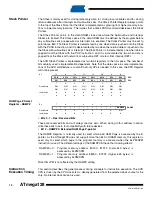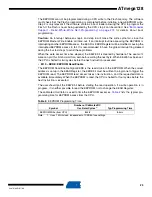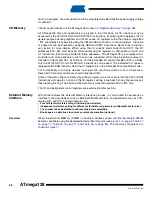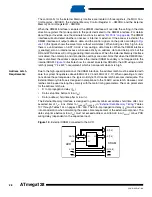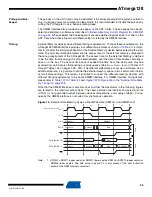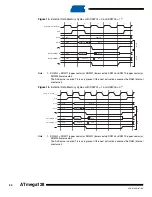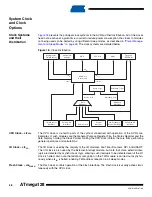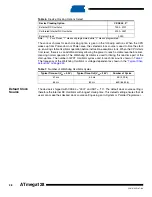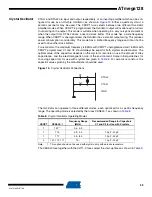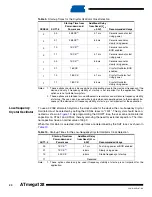
25
2467S–AVR–07/09
ATmega128
The next code examples show assembly and C functions for reading the EEPROM. The exam-
ples assume that interrupts are controlled so that no interrupts will occur during execution of
these functions.
EEPROM Write During
Power-down Sleep
Mode
When entering Power-down sleep mode while an EEPROM write operation is active, the
EEPROM write operation will continue, and will complete before the write access time has
passed. However, when the write operation is completed, the Oscillator continues running, and
as a consequence, the device does not enter Power-down entirely. It is therefore recommended
to verify that the EEPROM write operation is completed before entering Power-down.
Preventing EEPROM
Corruption
During periods of low V
CC,
the EEPROM data can be corrupted because the supply voltage is
too low for the CPU and the EEPROM to operate properly. These issues are the same as for
board level systems using EEPROM, and the same design solutions should be applied.
An EEPROM data corruption can be caused by two situations when the voltage is too low. First,
a regular write sequence to the EEPROM requires a minimum voltage to operate correctly. Sec-
ondly, the CPU itself can execute instructions incorrectly, if the supply voltage is too low.
EEPROM data corruption can easily be avoided by following this design recommendation:
Keep the AVR RESET active (low) during periods of insufficient power supply voltage. This can
be done by enabling the internal Brown-out Detector (BOD). If a reset occurs while a write oper-
Assembly Code Example
EEPROM_read:
; Wait for completion of previous write
sbic
EECR,EEWE
rjmp
EEPROM_read
; Set up address (r18:r17) in address register
out
EEARH, r18
out
EEARL, r17
; Start eeprom read by writing EERE
sbi
EECR,EERE
; Read data from data register
in
r16,EEDR
ret
C Code Example
unsigned char
EEPROM_read(
unsigned int
uiAddress)
{
/* Wait for completion of previous write */
while(EECR & (1<<EEWE))
;
/* Set up address register */
EEAR = uiAddress;
/*
Start eeprom read by writing EERE */
EECR |= (1<<EERE);
/* Return data from data register */
return EEDR;
}




